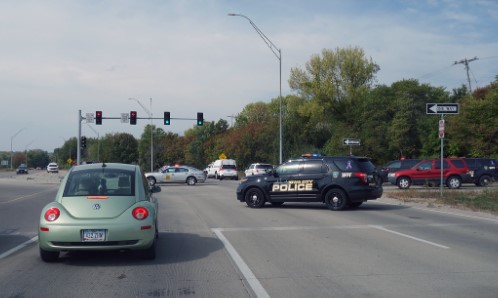If you’ve been in an auto accident, the more information you can gather about the accident, the better. Be sure to get contact details and insurance information from the other driver, as well as information about any witnesses. You should also document the accident by taking photos and creating a scene diagram. There are a few critical steps to documenting your accident through a diagram. An accurate diagram can improve your case and ensure a fair outcome. Timing is also essential, and promptly documenting an accident will be helpful.
When Is an Accident Diagram Necessary?

Sometimes, you may need to provide a diagram to support your claim. The Department of Transportation may also require a diagram for the accident report. Your automobile insurance agent or personal injury attorney can help or advise you on how best to document your accident. You’ll need to include details like the location of each vehicle, traffic flow in the area, and where the impact occurred. Use arrows to show which way the vehicles were traveling. Number the vehicles and label the street names. In addition to a diagram, photos of the accident and area are helpful.
What Are the Parts of an Accident Diagram?
You can draw accident diagrams either freehand or using an online program. They include details and labels, including the following:
- The vehicles involved, labeled with numbers.
- Nearby vehicles, if relevant to the accident.
- Witnesses and their locations.
- Roads that are relevant to the accident.
- Directions the vehicles were traveling in.
- Points of impact from the crash.
- Labels of the vehicles, witnesses, streets, and other details.
You don’t need to draw diagrams well or artistically since they only need to show what happened. You also don’t have to draw them to scale, but they should be labeled with the four directions, including north on the top, like a map.
Why Are Diagrams Recommended?
Attorneys and insurance adjusters rely on diagrams when handling personal injury claims. Diagrams provide essential information about the accident and improve the chance that your case will have a successful outcome. Since they play an important part in an accident case, they should be carefully reviewed for accuracy and signed and dated.
How Do I Create a Good Diagram?
There are a few steps to take to prepare for drawing an accident diagram. Make sure you know the area well and can point out details like driving and turn lanes, traffic signals or signs, lighting, and anything that could block drivers’ views. Checking the site on Google Earth may be helpful since it will include details that may help clarify your accident. You may be able to copy the image to include with your diagram or even draw your diagram on a Google Earth image.
Begin your plan for a diagram by marking all four directions on the drawing, with the north on top. Use arrows to indicate the direction the vehicles were traveling in. Sketch out roads in the vicinity of the accident, using maps or photos to help. It’s only necessary to include roads relevant to the accident, but be sure to account for lanes, turn lanes, and any traffic signs or lights. You don’t have to draw it to scale.
Draw the vehicles and number them, marking yours number one. You should include the vehicles involved in the accident, as well as any others that contributed to the event. Additional vehicles may have contributed to your or the other driver’s ability to avoid the accident. Draw the location of the witnesses, including names. You should have the witnesses’ names and phone numbers in your documentation. Witnesses may be on the sidewalk, in your car, or in another vehicle, so mark your diagram accordingly. Note anything that could have obstructed the views of the witnesses.
Show the point of impact and how fast the vehicles were moving at the time of the crash. Details like speed may be disputed, especially if some vehicles were speeding, so provide your best estimate based on what you observed.
As with any document, it’s always a good idea to have a second person review it to see whether anything is missing or whether there are any mistakes. Once carefully reviewed for accuracy and sufficient details, you should sign and date the diagram. Make a copy of it for your records before providing the diagram to authorities, your insurance company, or your attorney.
Which Other Steps Should I Take After an Accident?
In addition to creating a diagram of the accident scene and surrounding area, you should follow these basic steps after an accident:
- Exchange information with the other driver, including names, addresses, and insurance information. Most of the time, accidents with over $1,000 of property damage require calling the police, who will also gather necessary contact information. Don’t admit fault.
- Gather details about the vehicles involved, including the year, make, model, and color. Write down the location and details about the damage, as well as the license plate state and number and the vehicle type.
- Request contact information from witnesses in case they need to provide statements or give other details about the accident. Gathering witness statements is also best done at this time while the accident is fresh in their memory. You can write down or record statements using your smartphone.
- Take photos of the accident scene, including damage to vehicles and the streets, stoplights, and other relevant details from different angles. You may also want to take photos of injuries or other people. Take pictures from witness vantage points and note obstructions like trees and signs.
- Consider consulting an auto accident attorney if there are injuries or potential injuries from the accident. An attorney will help with the accident report and diagram and handle the back-and-forth with insurance companies and authorities. Personal injury attorneys typically aren’t paid until a settlement is reached.
Evidence and details help determine responsibility and insurance claim payouts, and a diagram may help insurance adjusters and the court system understand the collision better. American Auto Insurance provides affordable insurance options with top-notch service. If you have any questions about handling a claim or available automobile insurance coverage options, contact one of our representatives for more detailed information.


